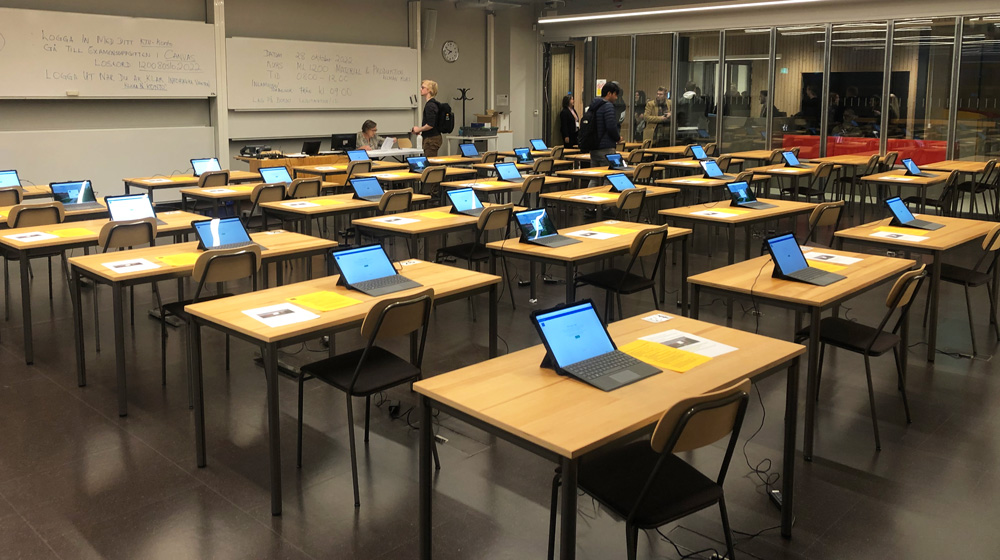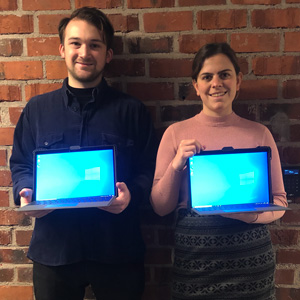Tablets make examinations more flexible

KTH's examination forms are developing to be more flexible and more digital. ITM has bought 95 new tablets that can be used for digital examinations – in practically any room. A trial in Södertälje turned out very successful.
Goodbye paper, hello digital exams. KTH's examination forms are developing to be more flexible and, above all, more digital. With digital exams the administrative processes surrounding the examination will improve and also give teachers the opportunity to individually adapt the exams. Currently, KTH is building up support centrally for new examination forms, but also locally at the schools.
During the pandemic, digitization took off at ITM and today the school is far ahead with examinations in computer rooms. During the year, ITM also purchased 95 tablets, primarily for examinations.

“Generally, we lack computer rooms for both exams and labs. With tablets, digital learning and examination can take place in virtually any room on campus with enough space. Smaller rooms previously unsuitable for digital exams can now be used more comfortably, especially when ‘overflow’ rooms are required to supplement existing computer rooms. But this also means that exams and labs otherwise spread across multiple rooms can be kept closer together,” says Peter Parlour from the ITM E-learning Team.
Campus Södertälje hosted the trial implementation of the tablets for partial exams during the month of September.
“Our first test was for a re-exam back in June, where 10 tablets were used. There was a bit of hesitation from the teacher that students wouldn’t feel comfortable using the tablets, but after doing it their comments were very positive,” says Nicole Arthur Cabrera from the ITM E-learning Team.
The initial issues were mostly logistical rather than software based. Transporting a large number of tablets across campus proved challenging due to the weight of the tablets and the risk of damage. And where is the best place to place the charging sockets in terms of spacing the tablets safely and in an exam-suitable layout?
Since then Södertälje have done multiple partial exams in Södertalje with around 15 students each, and most recently an exam where they reached a maximum of 27 tablets at once, which Nicole calls a “success”.
“Another advantage is that what the students do on the screen becomes less visible to the rest of the class due to the size and positioning of the screens and therefore the spacing of students is more flexible,” she says.
The tablets also have life outside the exams. The tablets include a touchscreen and sketch facility, something that the E-learning Team plan to implement in labs and classrooms.
“Any course can be improved with the use of tablets, but so far we’ve had the most interest from the Materials Science and Engineering and INDEK departments," says Peter Parlour.
Text: Anna Gullers
